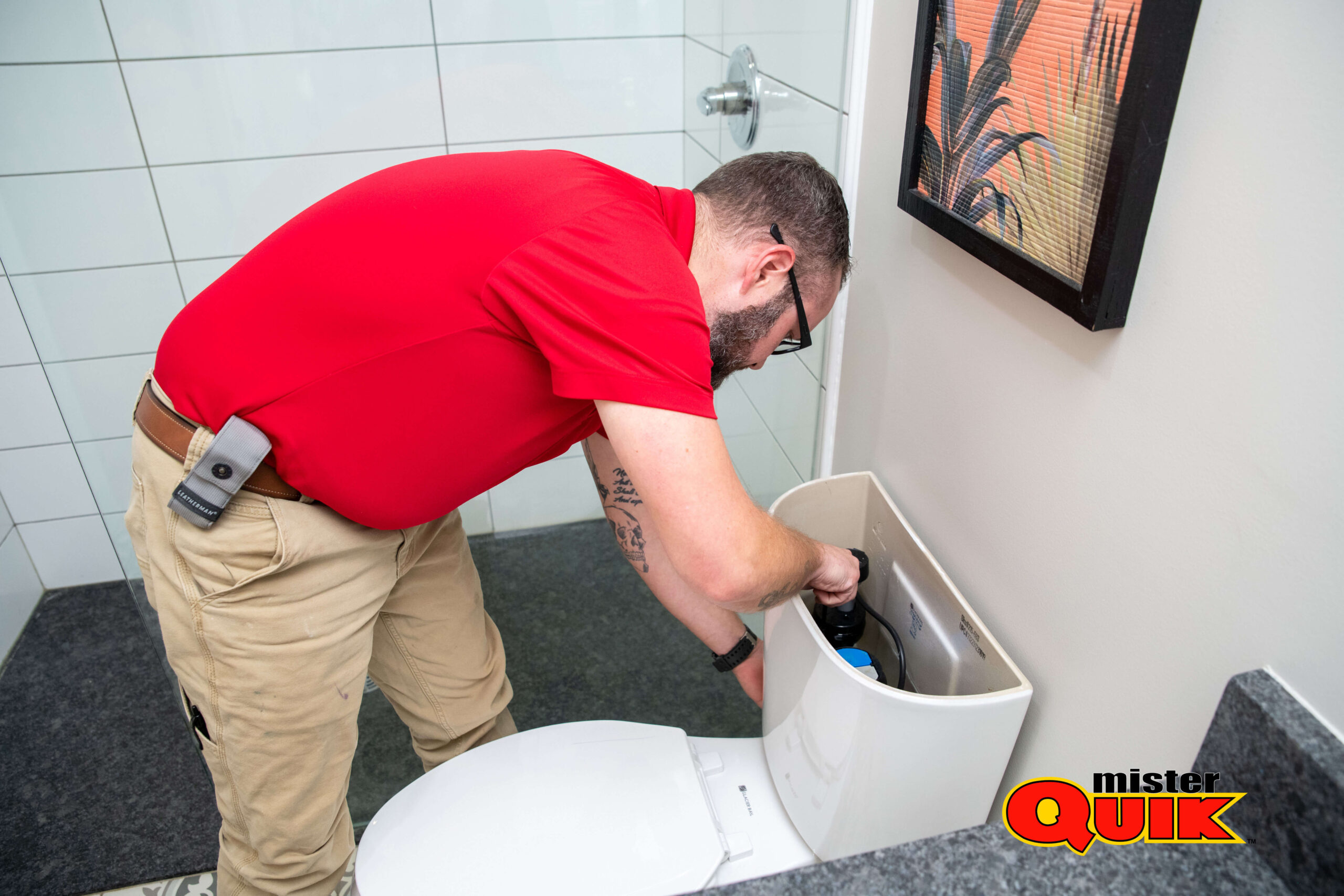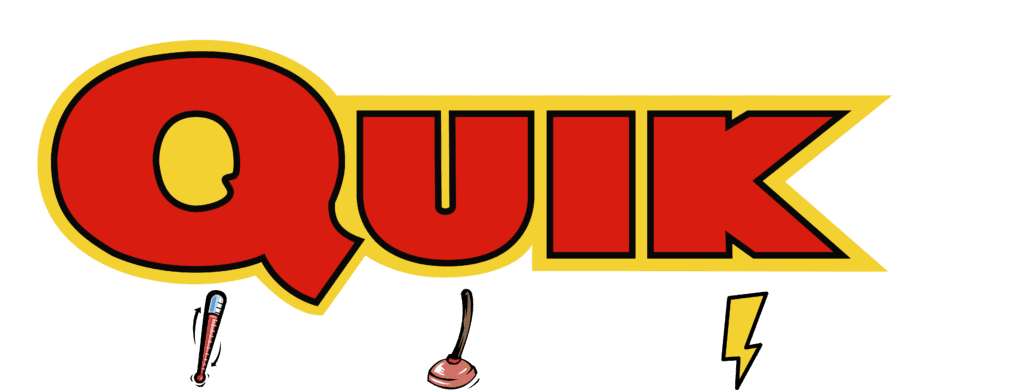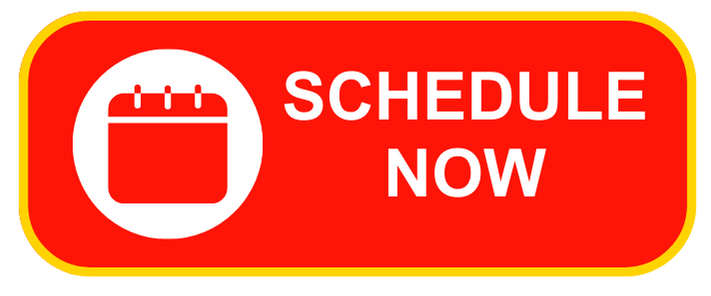Overflowing Toilets Kokomo

Overflowing Toilets Kokomo
Uh oh! A constantly running or overflowing toilet tank can be a real nuisance in your Kokomo home. Not only is the sound disruptive, but it also wastes a ton of water! Let’s break down what might be causing the overflow and some simple steps you can take to get things back to normal.
Understanding the Flush:
Your toilet tank is like the control center for your flushes. When you press the handle, a chain or lever lifts a flapper inside the tank. This allows water to rush into the bowl, creating the force for the flush. Once the handle is released, the flapper should fall back down, sealing the tank and stopping the flow of water.
Overflowing Culprits:
Now, why might your toilet tank be overflowing? Here are some common reasons:
- Flapper Failure: The flapper is like a rubber gasket that seals the tank. Over time, it can wear out, crack, or become misaligned, allowing water to constantly leak into the bowl.
- Fill Valve Issues: The fill valve controls how much water refills the tank after a flush. If it’s malfunctioning, it won’t shut off properly, causing the tank to overflow.
- Overflow Tube Trouble: This tube prevents the tank from overfilling by diverting excess water back down into the drain. If it’s clogged or damaged, it won’t work properly.
DIY Solutions (Before You Call a Plumber):
Before you reach for the phone, there are a few things you can try to fix a simple overflow:
- Adjust the Flapper: Sometimes, the flapper just needs a gentle nudge back into place. Check for any debris or mineral buildup that might be preventing a proper seal.
- Inspect the Fill Valve: See if the fill valve arm is stuck open. You might be able to gently adjust it back into position.
- Clear the Overflow Tube: Carefully pour some hot water down the overflow tube to clear any minor clogs.
When to Call a Kokomo Plumber:
If these DIY solutions don’t stop the overflow, it’s time to call a licensed Kokomo plumber. They can diagnose the problem and fix it quickly and efficiently. Here are some signs you might need professional help:
- The flapper is damaged beyond repair.
- The fill valve needs replacing.
- There’s a deeper issue with the tank or plumbing system.
Remember: A small toilet tank overflow can waste gallons of water, so it’s important to address the issue promptly. By understanding the possible causes and taking some initial steps, you’ll be well on your way to getting your Kokomo home back to a peaceful and water-efficient state!
Toilet Overflowing But Not Clogged
Uh Oh! My Toilet Is Overflowing, But It Doesn’t Seem Clogged.
We’ve all been there. You hear that dreaded gurgling sound, and then – disaster! Your toilet overflows, creating a messy situation in your bathroom. But hold on – you plunged it, and there’s no visible blockage. What gives?
Fear not, fellow Kokomo residents! There are a few reasons why your toilet might be overflowing even if it’s not clogged. Let’s explore the most common culprits:
Inside your toilet tank, there's a rubber flapper that sits over the drain hole. When you flush, the flapper lifts, allowing water to flow into the bowl. Once the bowl fills up, the flapper should fall back down and create a seal, stopping the water flow. However, sometimes the flapper gets old, worn, or misaligned. This can cause it to leak or not seal properly, leading to a constant trickle of water filling the bowl and eventually overflowing.
Another tank resident, the fill float, is like a tiny boat that bobs up and down as the tank fills with water. When the water reaches a certain level, the float tells the valve to shut off, stopping the flow. But if the fill float is malfunctioning or positioned too high, the tank might overfill. This excess water has nowhere to go but up and over the rim of the bowl.
Your toilet's venting system is like a secret partner, working behind the scenes to ensure everything flows smoothly. The vent pipe allows air into the system, preventing pressure build-up when you flush. However, if the vent pipe gets clogged with debris (leaves, twigs, etc.), it can disrupt the pressure balance. This can cause gurgling sounds, slow draining, and even overflows.
When faced with an overflowing toilet, the immediate action is to locate the water shut-off valve near the base of the toilet and turn it clockwise to stop the flow of water. If the valve is inaccessible or if turning it off doesn’t stop the overflow, remove the lid from the tank and lift the float ball or cup to halt the water flow manually. Once the water is under control, use a plunger to attempt to clear the blockage in the toilet drain. If the problem persists, consider seeking professional assistance from a plumber to address any underlying issues.
Yes, a toilet can overflow without being clogged. Factors such as a malfunctioning float mechanism in the tank, a blocked vent pipe, or a problem with the toilet’s flushing mechanism can all lead to an overflow. Additionally, excessive water pressure or a faulty fill valve can contribute to overflow issues. Regular maintenance and prompt attention to any plumbing problems can help prevent such incidents.
To prevent your toilet from filling up and overflowing, start by checking the water level in the tank and adjusting the float to ensure it’s at the correct height. Inspect the flapper valve for any signs of damage or debris that might prevent it from sealing properly and replace it if necessary. Additionally, examine the refill tube to ensure it’s properly connected and not submerged underwater, which could lead to continuous filling. If the problem persists, consider calling a plumber to inspect for more complex issues such as a clogged drain line or a malfunctioning fill valve.
When facing a clogged toilet filled with water, it’s important to remain calm and take immediate action to prevent further overflow. Start by turning off the water supply to the toilet to avoid additional flooding. Next, assess the severity of the clog and attempt to clear it using a plunger. If the plunger isn’t effective, consider using a toilet auger to break up the blockage. Avoid flushing repeatedly, as this can worsen the situation. If DIY methods fail, it may be necessary to contact a professional plumber for assistance.
Toilet Keeps Overflowing After Flush
Oh no! Just flushed the toilet, and instead of the usual gurgle and goodbye, it’s overflowing! Don’t worry, these situations are more common than you might think, and there are ways to tackle them. This guide will help you understand why your toilet might be overflowing and what steps you can take to get things back to normal.

When you flush the toilet, a powerful surge of water flushes waste away and refills the bowl. This process relies on several components working together:
- The flapper: This rubber seal sits at the bottom of the tank and holds water until you flush. When you press the handle, the flapper lifts, releasing water into the bowl.
- The fill valve: Once the flush is complete, the fill valve opens, refilling the tank with fresh water to get ready for the next flush.
- The drain: This is the opening at the bottom of the bowl that allows waste and water to flow into the sewer system.
Now, let’s explore some reasons why your toilet might be overflowing:
- Clogged Drain: This is the most common culprit. If the drain is blocked by debris like toilet paper, wipes, or other objects, the water can’t flow out properly, causing it to back up and overflow the bowl.
- Faulty Flapper: A worn-out or damaged flapper might not seal the tank properly. This allows water to leak constantly from the tank to the bowl, eventually overflowing it.
- Fill Valve Issues: A malfunctioning fill valve can keep refilling the tank even when it’s full. This continuous flow of water can quickly lead to an overflow.
- Clogged Vent Pipe: The vent pipe allows air into the plumbing system, which helps with proper drainage. If this pipe is clogged, it can disrupt the flow of water and cause an overflow.
If your toilet overflows, here are some steps you can take:
- Turn Off the Water Supply: Locate the shut-off valve behind the toilet and turn it clockwise to stop the flow of water to the tank.
- Contain the Mess: If there’s overflow, use towels or a mop to soak up as much water as possible to prevent further damage.
- Simple Fixes: For a minor clog, you can try using a toilet plunger.
If the clog persists, you suspect a faulty flapper or fill valve issue or the vent pipe might be clogged, it’s best to call a professional plumber. Plumbers have the tools and expertise to diagnose the problem and fix it efficiently.
Here are some tips to keep your toilet running smoothly:
- Be mindful of what you flush: Only flush toilet paper and human waste. Avoid flushing wipes, feminine hygiene products, or anything that can clog the drain.
- Schedule regular maintenance: Consider getting your plumbing system inspected by a professional plumber every year or two. This can help identify potential problems before they cause an overflow.
If your DIY attempts don’t solve the problem, Kokomo has many reputable plumbers who can help. Look for plumbers with positive reviews and experience dealing with overflowing toilets.
Remember, a quick response is crucial when dealing with an overflowing toilet. By understanding the causes and taking the right steps, you can restore peace to your Kokomo bathroom quickly.
Toilet Overflow Pipe
Uh oh! Has your toilet decided to turn into a surprise fountain? Don’t worry, these things happen, and luckily, most overflowing toilets are a relatively simple fix. If you’re facing a plumbing predicament, this guide will help you understand what’s going on and how to get things back under control.

Every toilet has a built-in safety feature you might not even know about: the overflow pipe. This unsung hero sits inside the tank and acts like a drain for the tank itself. Here's how it works: The tank fills with water to get ready for your next flush. A fill valve (sometimes called a ballcock) controls the water flow and shuts off automatically when the tank reaches the right level. But what if the fill valve malfunctions and keeps pouring water? That's where the overflow pipe steps in. The overflow pipe creates a secondary path for excess water to flow down into the bowl, preventing the tank from overflowing and causing a flood in your bathroom.

Even with an overflow pipe, there are a few reasons why your toilet might still overflow:
Clogged Overflow Pipe: Sometimes, the overflow pipe itself can get clogged with mineral buildup or debris. This can prevent it from doing its job and allow water to overflow from the tank.
Faulty Fill Valve: As mentioned before, a malfunctioning fill valve that won't shut off properly is a common culprit for overflowing toilets.
Clogged Toilet Drain: If your toilet drain is clogged, the tank might fill up faster than the water can drain away, leading to an overflow.

If your toilet overflows, the first step is to stop the water flow. Locate the shut-off valve behind the toilet and turn it clockwise to shut off the water supply to the tank. This will prevent the tank from refilling and making things worse.
Here's what you can try next:
Simple Fixes: Sometimes, a quick fix might be all you need. Try plunging the toilet to see if you can dislodge a clog. You can also try carefully adjusting the float arm on the fill valve to ensure it's at the proper level to shut off the water flow.
Call a Plumber: If these simple solutions don't work, it's best to call a professional plumber. They have the tools and expertise to diagnose the problem and get your toilet back in working order quickly and safely.

Preventing an overflowing toilet is always better than dealing with the aftermath. Here are some tips:
Schedule Regular Maintenance: Have a licensed plumber inspect your toilet and plumbing system periodically to identify any potential problems before they arise.
Listen for Unusual Noises: A constantly running toilet or strange gurgling sounds could indicate a problem with the fill valve or another component.
Don't Flush Unflushables: Only flush toilet paper and human waste. Avoid flushing anything else that could clog the pipes.
Can You Wait for a Clogged Toilet?
Let’s face it, a clogged toilet is a household nightmare. It disrupts your day and can be downright unpleasant. But before you panic about an overflowing disaster, here’s the question: can you wait it out, or should you take action right away?
The Truth About Waiting on a Clogged Toilet:
Sometimes, a simple clog caused by too much toilet paper might clear up on its own. The water in the bowl can exert pressure and eventually loosen things up. However, waiting comes with some risks:
- Overflowing Chaos: If the clog is stubborn, the rising water level could lead to a messy overflow. This not only creates a sanitation issue, but it can also damage your bathroom floor and surrounding areas.
- Bacteria Growth: The stagnant water in the bowl becomes a breeding ground for bacteria. The longer you wait, the more likely it is for unpleasant odors to develop.
- Frustration Factor: Let’s be honest, a clogged toilet is stressful. Waiting only prolongs the anxiety and inconvenience.
So, When Should You Take Action on a Clogged Toilet?
Here are some signs it’s time to tackle the clog, not wait:
- The Bowl Won’t Drain at All: If the water level just keeps rising and won’t budge, it’s time to get to work.
- The Toilet Makes Gurgling Sounds: This gurgling can indicate there’s a blockage further down the drainpipe.
- There’s Sewage Backup: If waste starts backing up into your bathtub or shower drain, it’s a major clog requiring immediate attention.
Taking Care of Business: Safe Clog-Clearing Techniques
Before you reach for the plunger, here’s a simple trick to try:
- Hot Water Power: Boil a pot of water and carefully pour it into the toilet bowl. The hot water can sometimes loosen up soft clogs.
If the hot water doesn’t work, a plunger is your next best friend.
Here’s a quick tip: Make sure you get a good seal around the drain of the toilet bowl to create enough suction.
Remember, if these methods fail, don’t hesitate to call a professional plumber. They have the tools and expertise to tackle even the toughest clogs.
Preventing Clogged Toilets in Kokomo
Here are some everyday habits that can help keep your Kokomo home’s plumbing running smoothly:
- Be mindful of what you flush: Only flush toilet paper and human waste. Avoid flushing anything else, like wipes, feminine hygiene products, or food scraps.
- Limit the amount of toilet paper: A little goes a long way!
- Invest in a toilet bowl strainer: This can catch small items that might otherwise cause a clog.
By following these tips, you can minimize the risk of a clogged toilet and keep your Kokomo bathroom running smoothly. But remember, if a clog does strike, don’t wait for an overflow! Take action to address the issue and get your plumbing back in working order.
Toilet Overflow Water Damage Insurance
Ugh! We’ve all been there. You hear a gurgling sound, and then – disaster strikes: your toilet overflows. Let’s talk about what to do and how your insurance might help with any water damage caused by the overflow.
First Steps After a Toilet Overflow
The most important thing is to stop the overflow as quickly as possible. Turn off the water supply valve located behind the toilet. It's usually a knob you turn clockwise. If you can't find it, don't hesitate to call a Mister Quik plumber in Kokomo.
Grab towels, rags, or a wet vac to soak up as much water as possible. Block doorways with towels to prevent the water from spreading to other rooms.
Open windows and doors to create airflow and help dry the area. This will help prevent mold growth.
Once the overflow is contained, take a look around. Is the water damage contained to the bathroom, or has it seeped into other areas? This will help you determine the next steps.
Here’s the key takeaway: Always check your homeowner’s insurance policy to understand what’s covered in case of water damage. If you’re unsure, don’t hesitate to call your insurance company and ask for clarification.
Troubleshoot Checklist:
- Turn off the water valve: Locate the valve behind the toilet (usually a knob) and turn it clockwise to stop the water supply.
- If you can’t find it: Don’t wait! Call a licensed plumber immediately.
- Grab towels and rags: Soak up as much overflow water as possible.
- Block doorways: Use towels to prevent the water from spreading to other rooms.
- Plunge it out: Use a forceful plunging motion to dislodge the clog.
- Try a toilet snake (optional): If plunging doesn’t work, a toilet snake can reach deeper clogs.
- Open windows and doors: Increase airflow to help dry the area and prevent mold growth.
- Use towels or a wet vac (optional): Continue drying the affected area with towels or a wet vac for faster recovery.
- Inspect the bathroom: Look for any signs of water damage beyond the immediate overflow area.
- Consider calling a plumber: If the damage seems extensive or you’re unsure how to proceed, consult a professional plumber.








